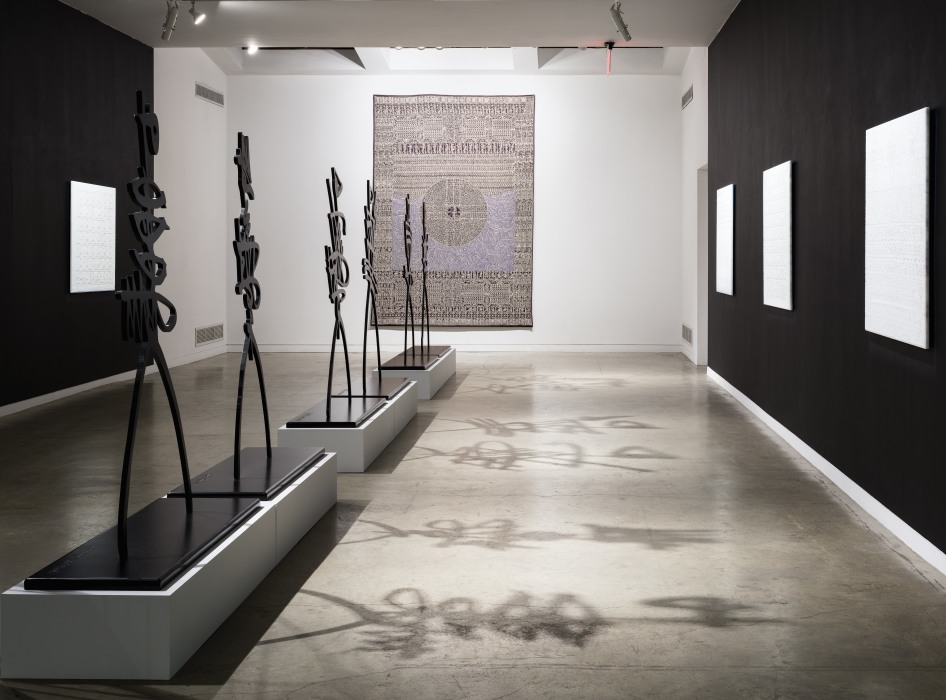
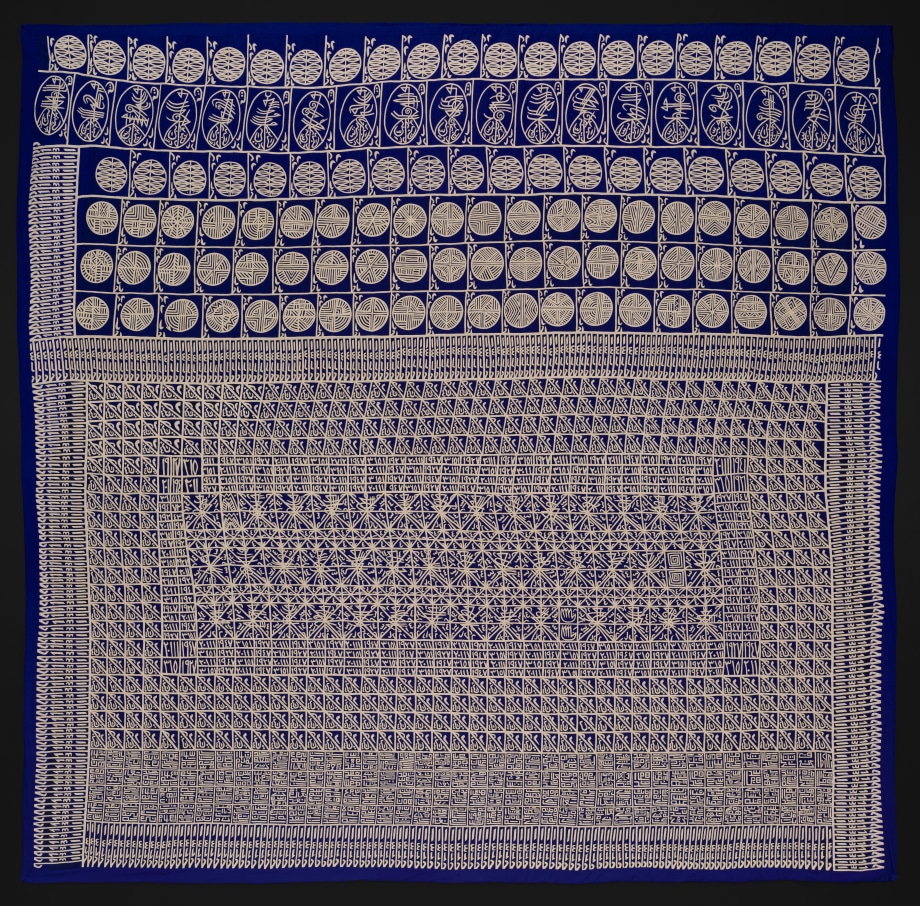
Rachid Koraïchi, Suaires Bleus des Pharaons I, 2021-25, Appliqué, 118 x 118 in (300 x 300 cm)
KORRA224

Rachid Koraïchi, Suaires Bleus des Pharaons II, 2021-25, Appliqué, 118 x 118 in (300 x 300 cm)
KORRA225
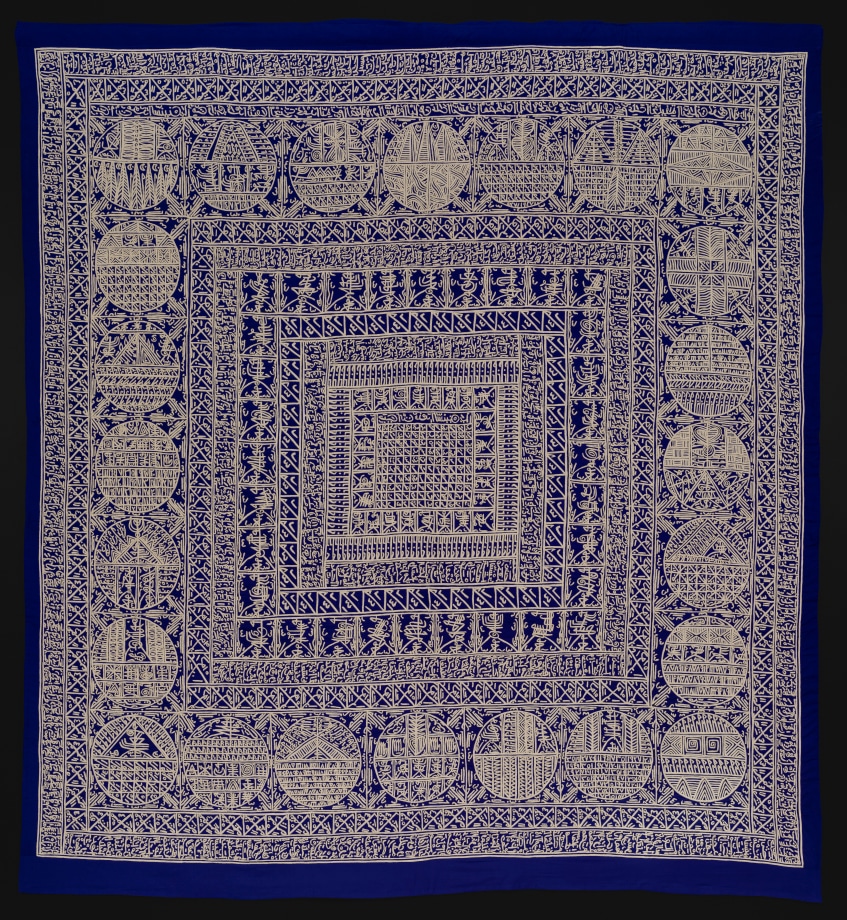
Rachid Koraïchi, Suaires Bleus des Pharaons III, 2021-25, Appliqué, 118 x 118 in (300 x 300 cm)
KORRA226
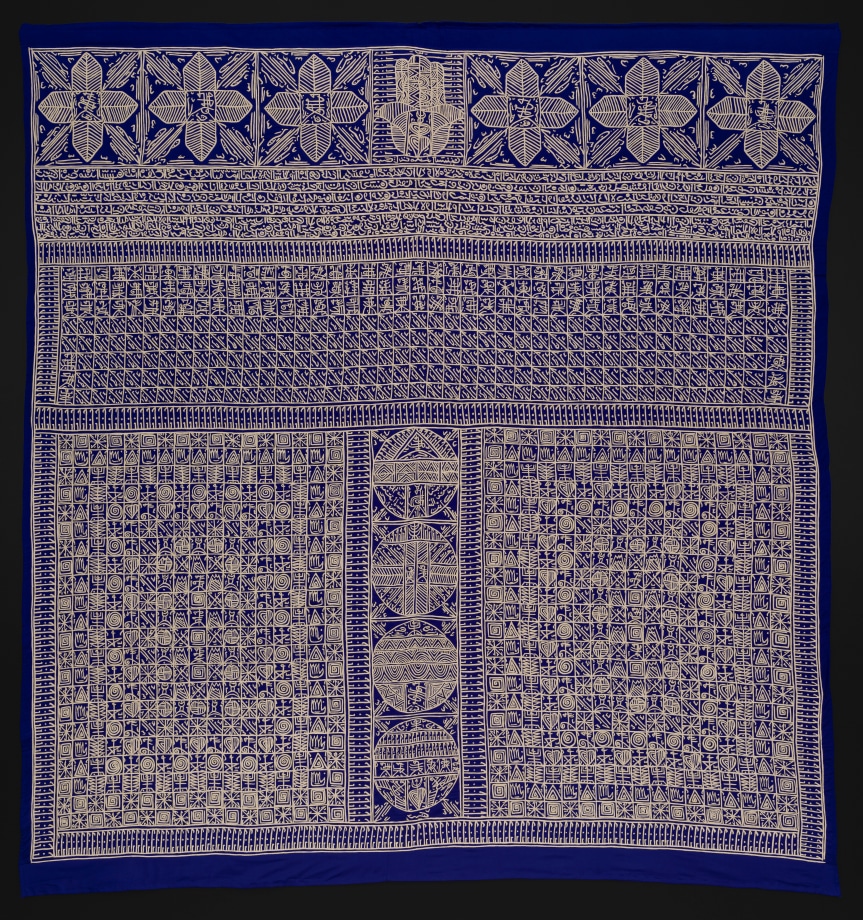
Rachid Koraïchi, Suaires Bleus des Pharaons IV, 2021-25, Appliqué, 118 x 118 in (300 x 300 cm)
KORRA227

Rachid Koraïchi, Suaires Bleus des Pharaons V, 2021-25, Appliqué, 118 x 118 in (300 x 300 cm)
KORRA228
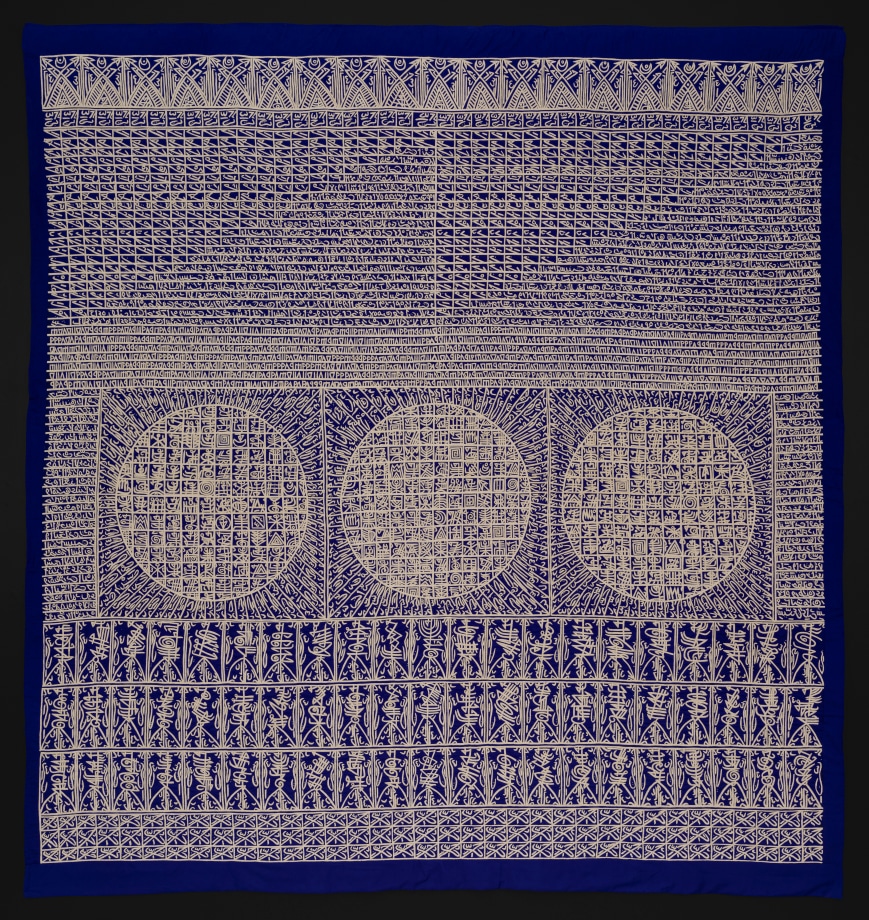
Rachid Koraïchi, Suaires Bleus des Pharaons VI, 2021-25, Appliqué, 118 x 118 in (300 x 300 cm)
KORRA229
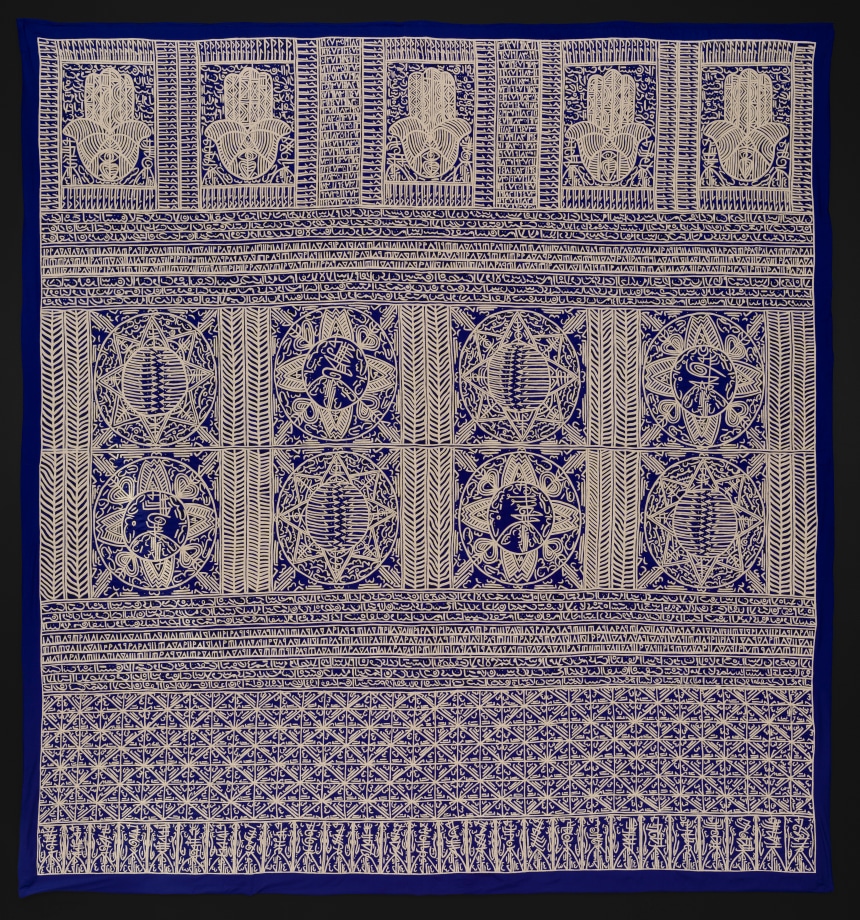
Rachid Koraïchi, Suaires Bleus des Pharaons VII, 2021-25, Appliqué, 118 x 118 in (300 x 300 cm)
KORRA230
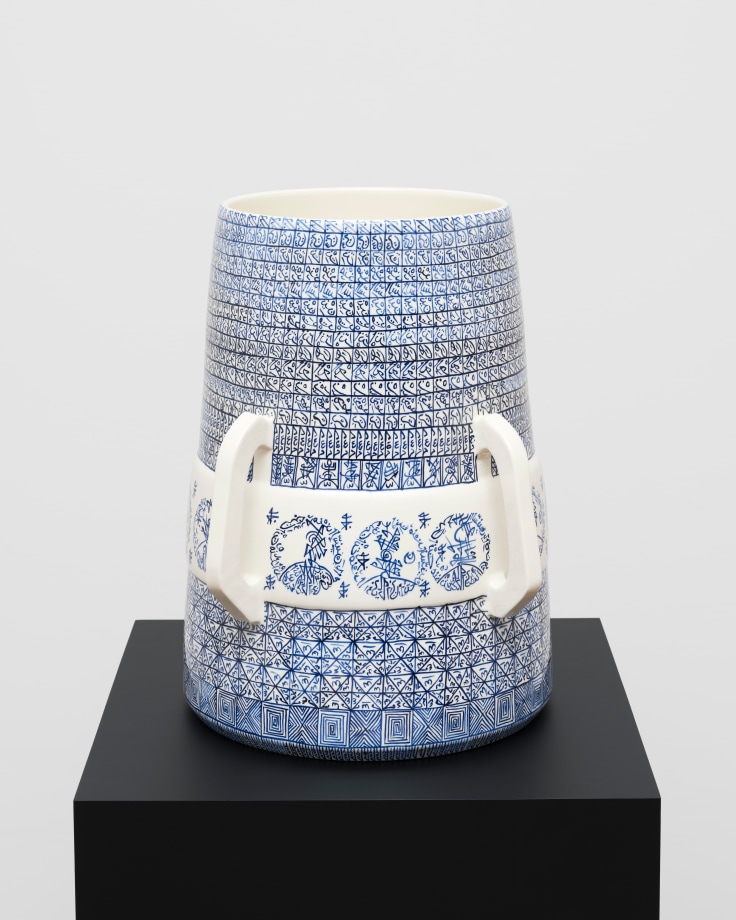
Rachid Koraïchi, Jarres de Clot et de Naâma II, 2024, Soft paste porcelain, blue and white oxide, 19 ⅓ x 13 ⅖ x 10 ⅖ in (49 x 34 x 26.5 cm)
KORRA218
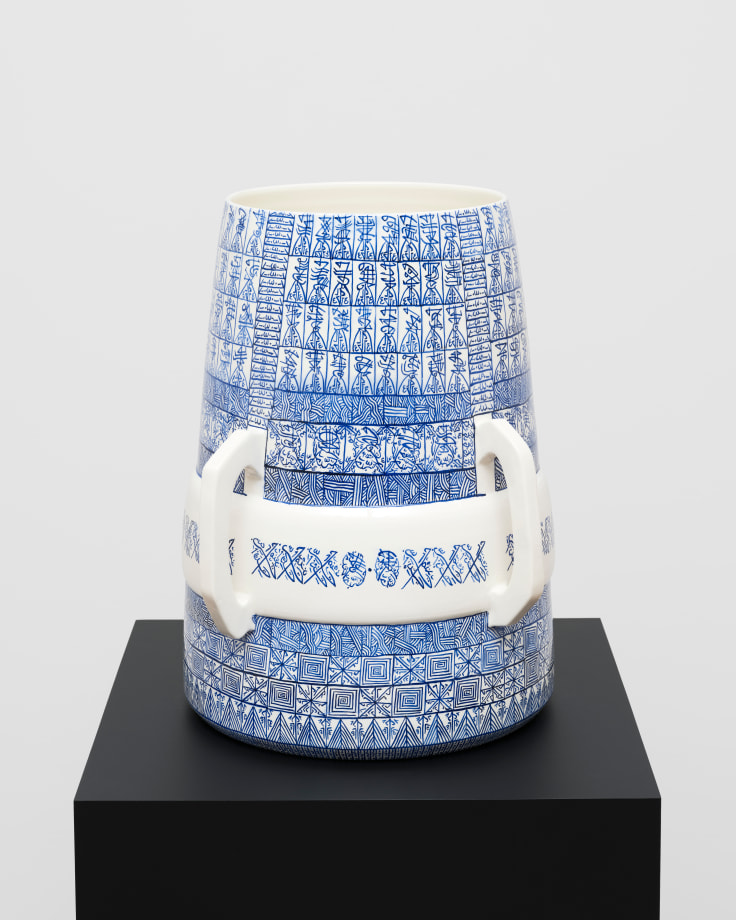
Rachid Koraïchi, Jarres de Clot et de Naâma III, 2024, Soft paste porcelain, blue and white oxide. 19 ⅓ x 13 ⅖ x 10 ⅖ in (49 x 34 x 26.5 cm)
KORRA219
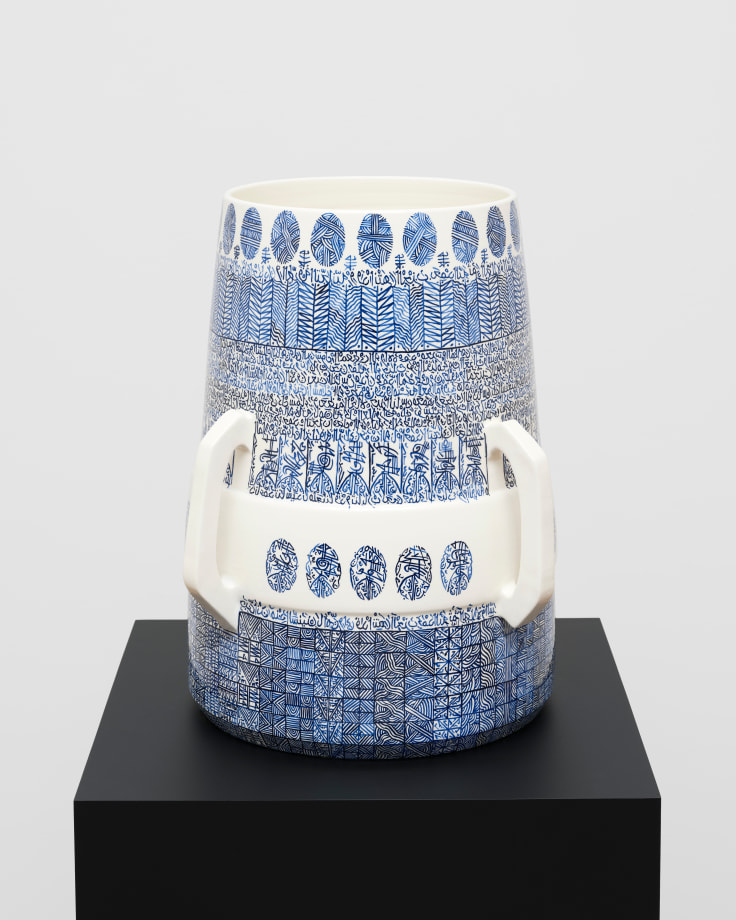
Rachid Koraïchi, Jarres de Clot et de Naâma IV, 2024, Soft paste porcelain, blue and white oxide, 19 ⅓ x 13 ⅖ x 10 ⅖ in (49 x 34 x 26.5 cm)
KORRA220
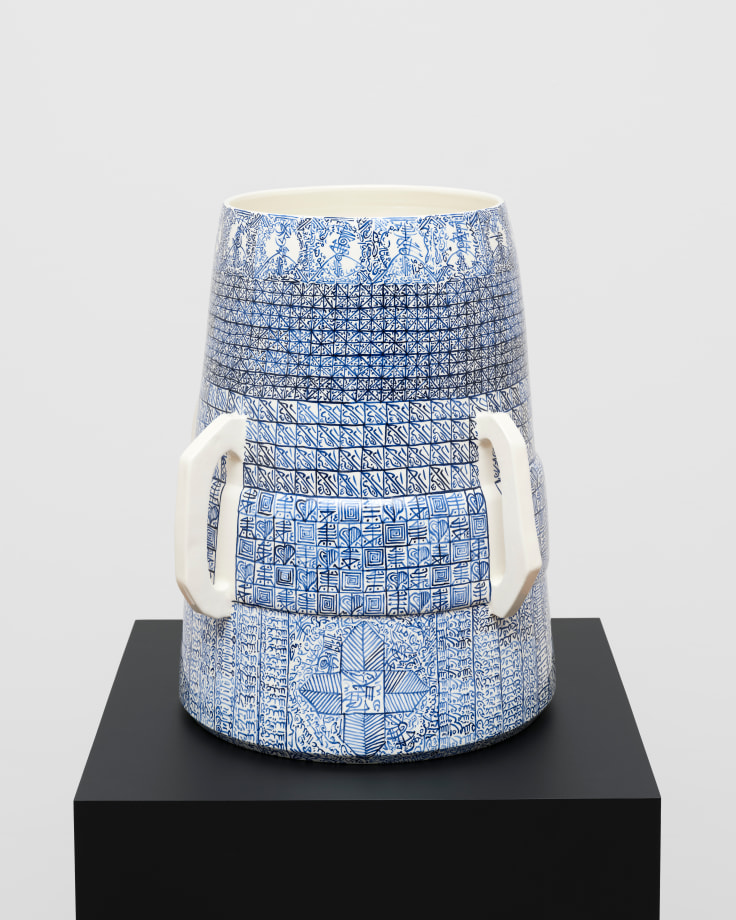
Rachid Koraïchi, Jarres de Clot et de Naâma V, 2024, Soft paste porcelain, blue and white oxide, 19 ⅓ x 13 ⅖ x 10 ⅖ in (49 x 34 x 26.5 cm)
KORRA221
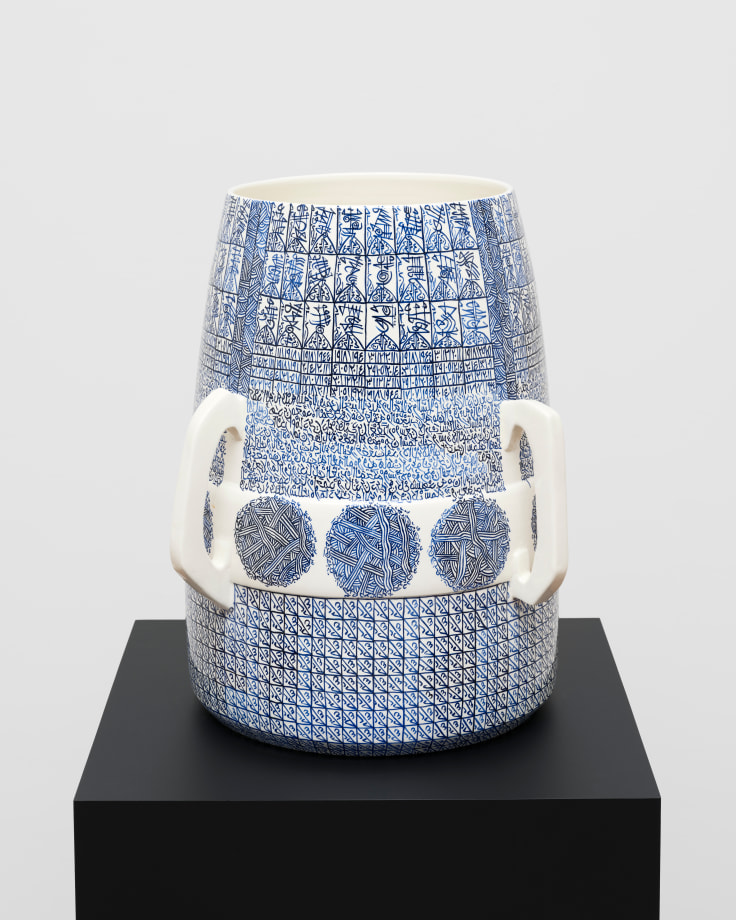
Rachid Koraïchi, Jarres de Clot et de Naâma VI, 2024, Soft paste porcelain, blue and white oxide, 19 ⅓ x 13 ⅖ x 10 ⅖ in (49 x 34 x 26.5 cm)
KORRA222
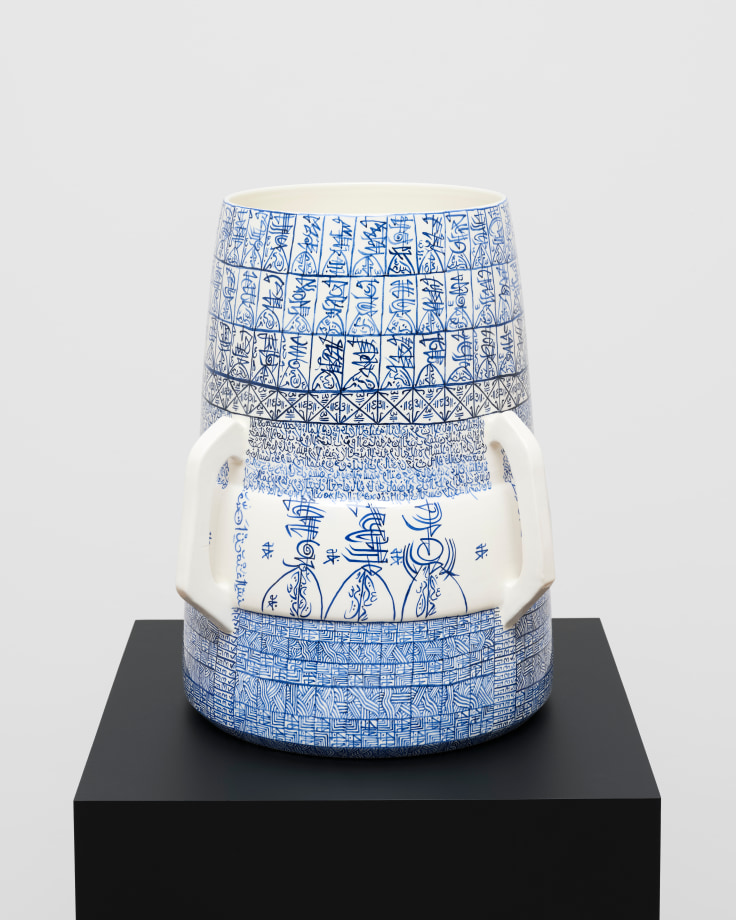
Rachid Koraïchi, Jarres de Clot et de Naâma VII, 2024, Soft paste porcelain, blue and white oxide, 19 ⅓ x 13 ⅖ x 10 ⅖ in (49 x 34 x 26.5 cm)
KORRA223
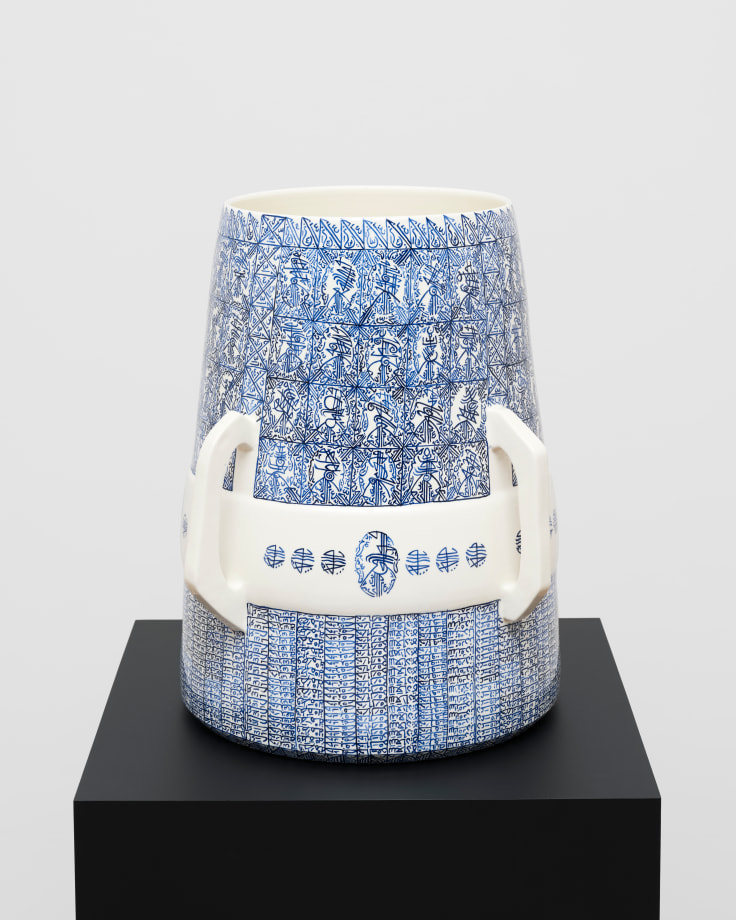
Rachid Koraïchi, Jarres de Clot et de Naâma VIII, 2024, Soft paste porcelain, blue and white oxide, 19 ⅓ x 13 ⅖ x 10 ⅖ in (49 x 34 x 26.5 cm)
KORRA233
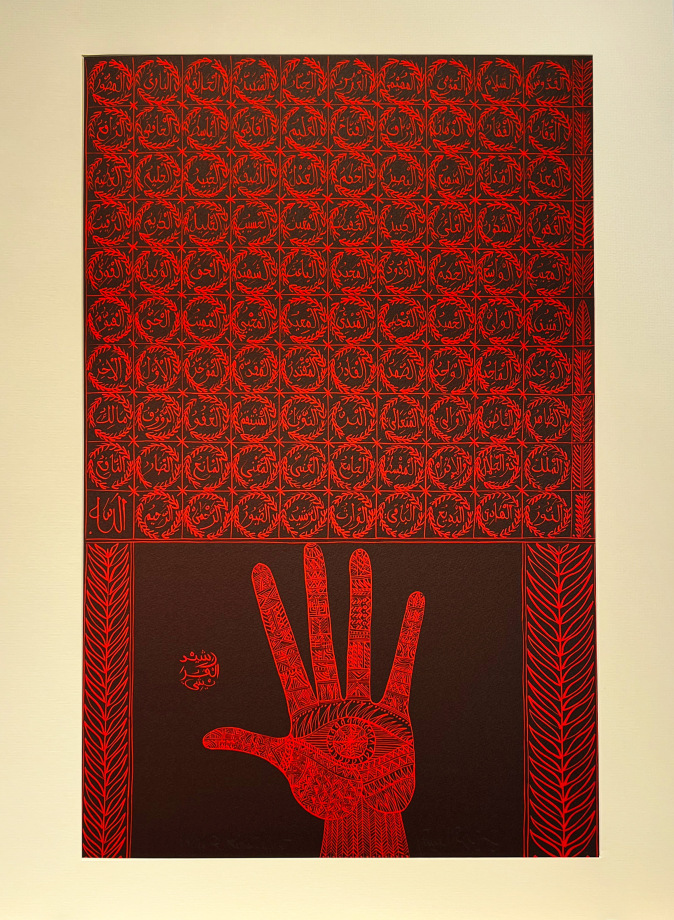
Rachid Koraïchi, Al-Hallaj (1), 2009, Lithograph, 24 x 15 ¾ in (61 x 40 cm)
KORRA216
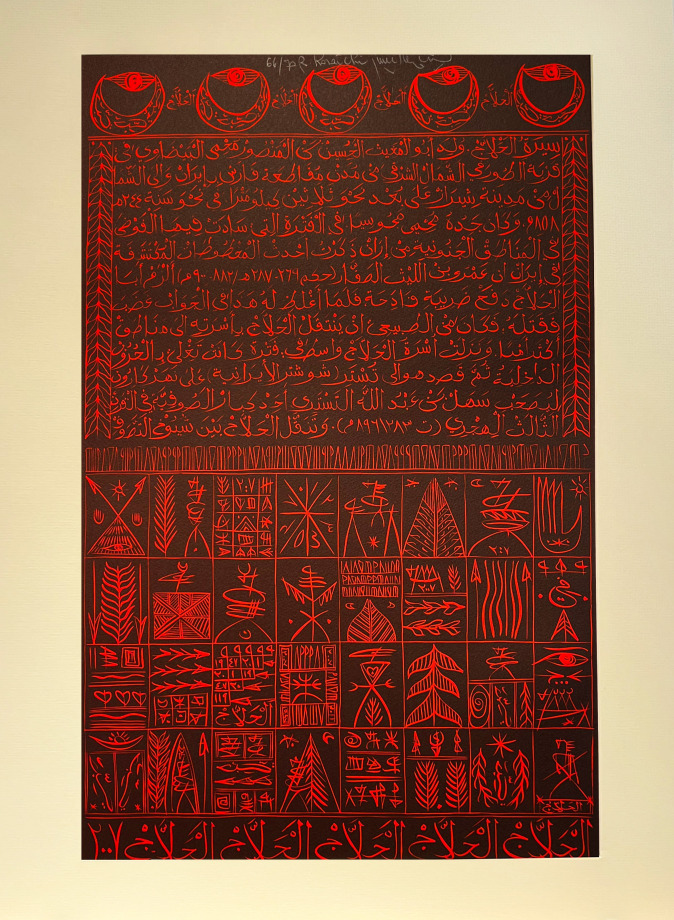
Rachid Koraïchi, Al-Hallaj (2), 2009, Lithograph, 24 x 15 ¾ in (61 x 40 cm)
KORRA213
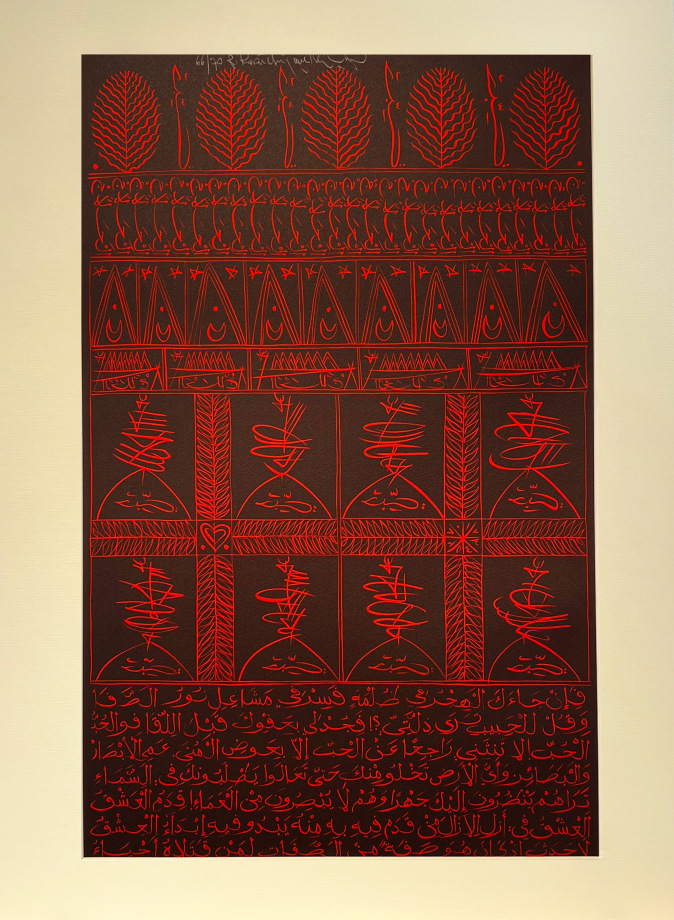
Rachid Koraïchi, Al-Hallaj (3), 2009, Lithograph, 24 x 15 ¾ in (61 x 40 cm)
KORRA212
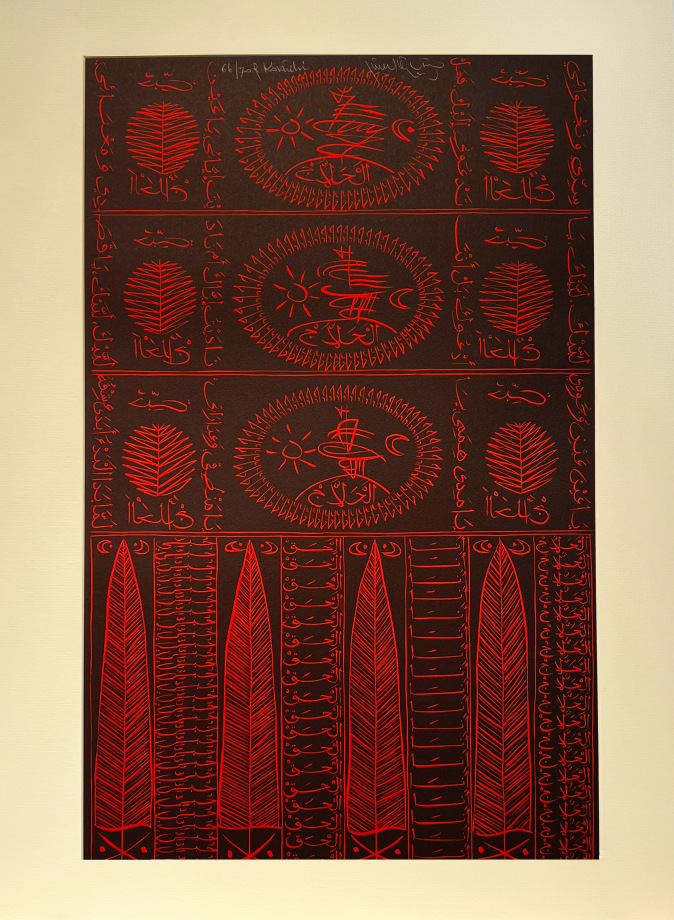
Rachid Koraïchi, Al-Hallaj (4), 2009, Lithograph, 24 x 15 ¾ in (61 x 40 cm)
KORRA211
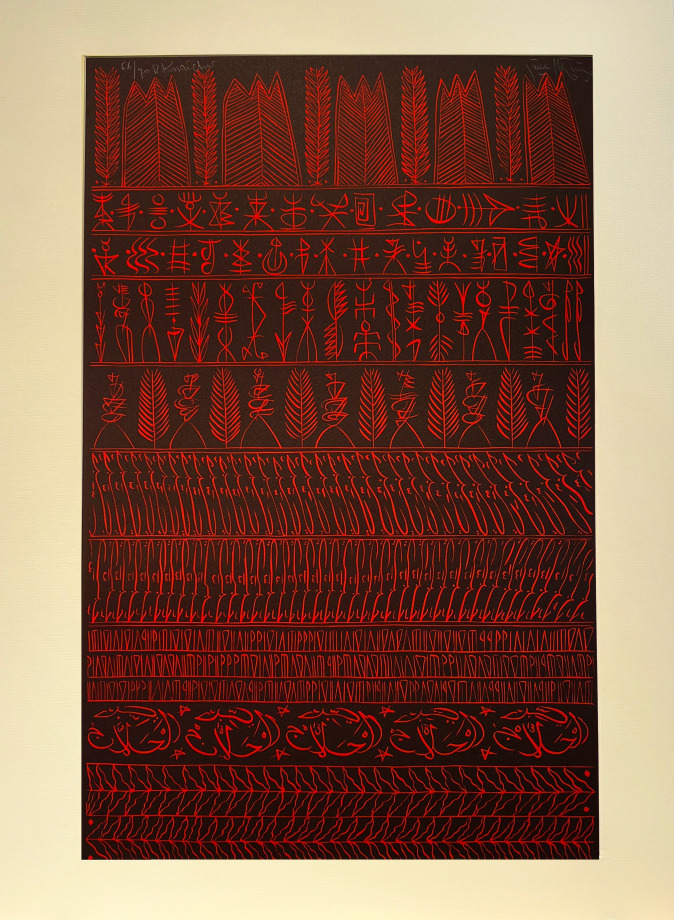
Rachid Koraïchi, Al-Hallaj (5), 2009, Lithograph, 24 x 15 ¾ in (61 x 40 cm)
KORRA215
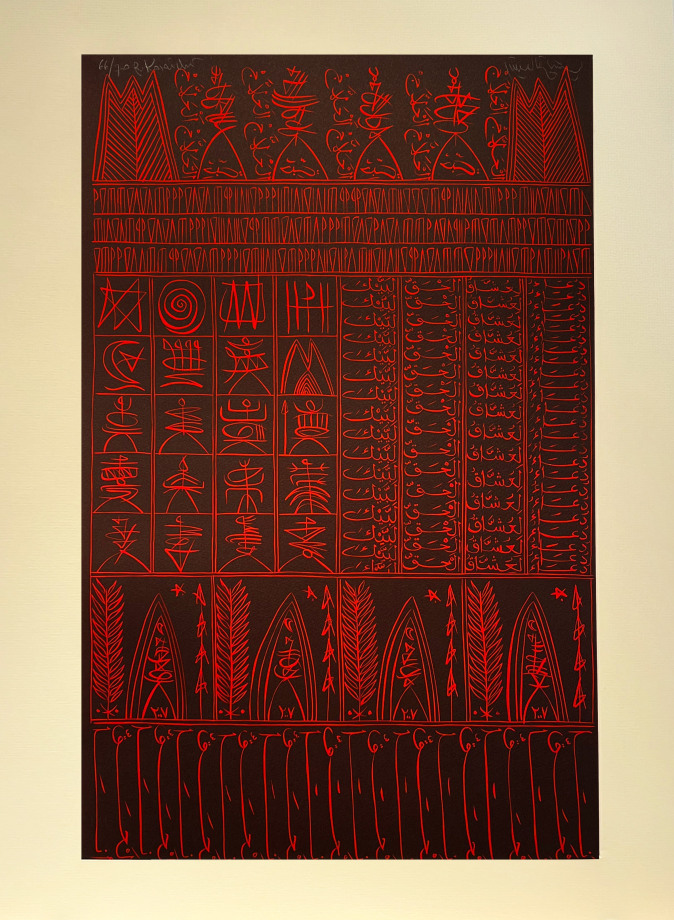
Rachid Koraïchi, Al-Hallaj (6), 2009, Lithograph, 24 x 15 ¾ in (61 x 40 cm)
KORRA214
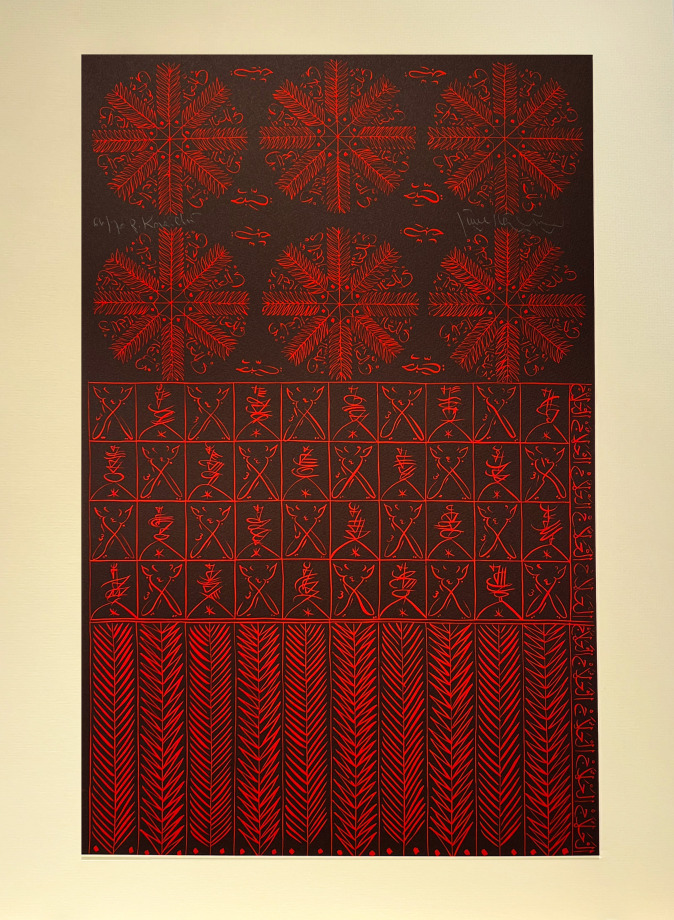
Rachid Koraïchi, Al-Hallaj (7), 2009, Lithograph, 24 x 15 ¾ in (61 x 40 cm)
KORRA209
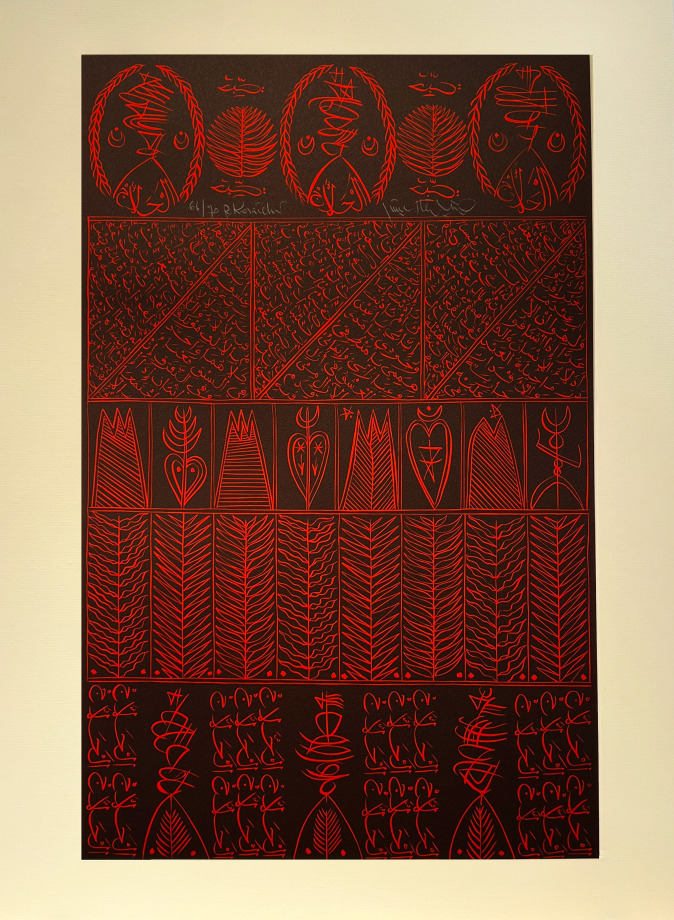
Rachid Koraïchi, Al-Hallaj (8), 2009, Lithograph, 24 x 15 ¾ in (61 x 40 cm)
KORRA210

Rachid Koraïchi, Cheikh Sidi Ahmed Tidjani (1), 2009, Lithograph, 24 x 15 ¾ in (61 x 40 cm)
KORRA160
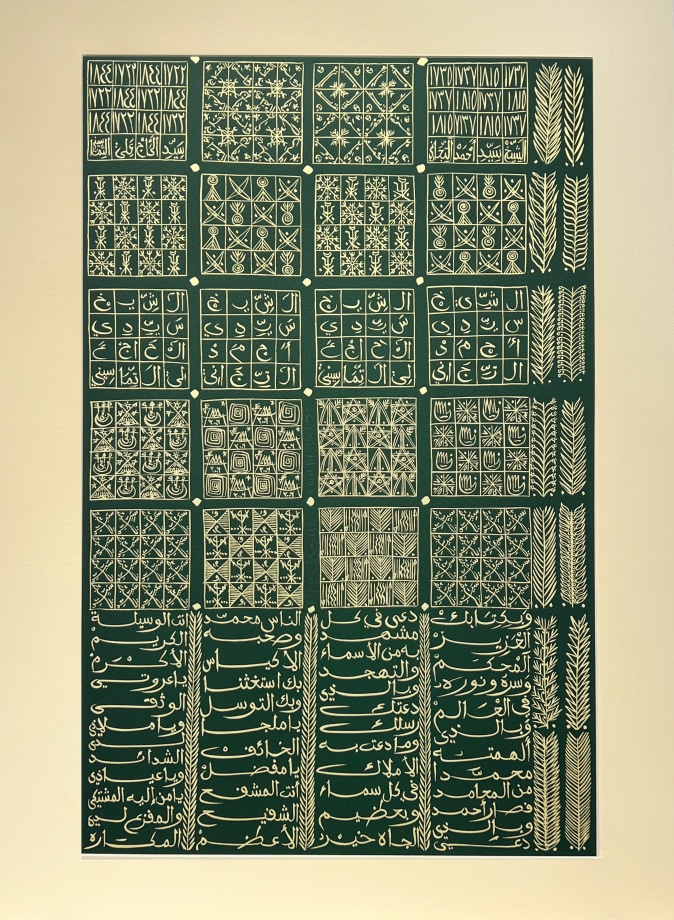
Rachid Koraïchi, Cheikh Sidi Ahmed Tidjani (2), 2009, Lithograph, 24 x 15 ¾ in (61 x 40 cm)
KORRA159
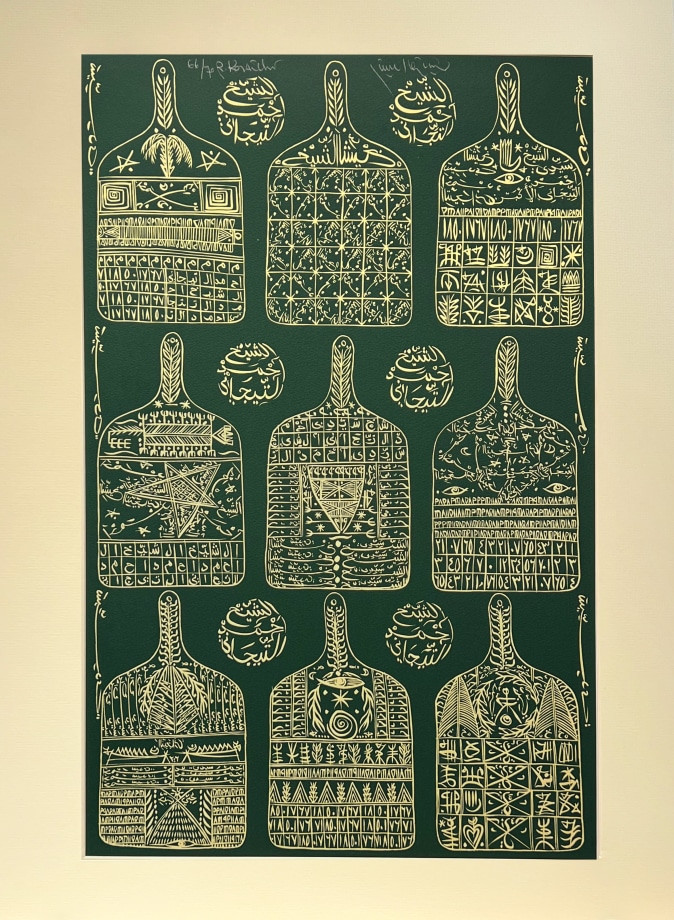
Rachid Koraïchi, Cheikh Sidi Ahmed Tidjani (3), 2009, Lithograph, 24 x 15 ¾ in (61 x 40 cm)
KORRA155
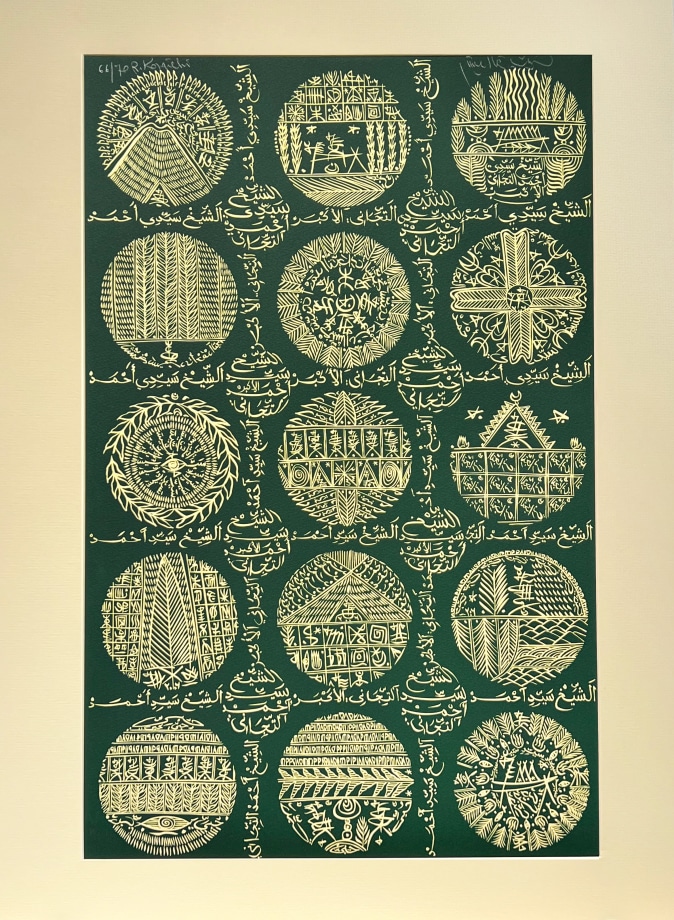
Rachid Koraïchi, Cheikh Sidi Ahmed Tidjani (4), 2009, Lithograph, 24 x 15 ¾ in (61 x 40 cm)
KORRA154
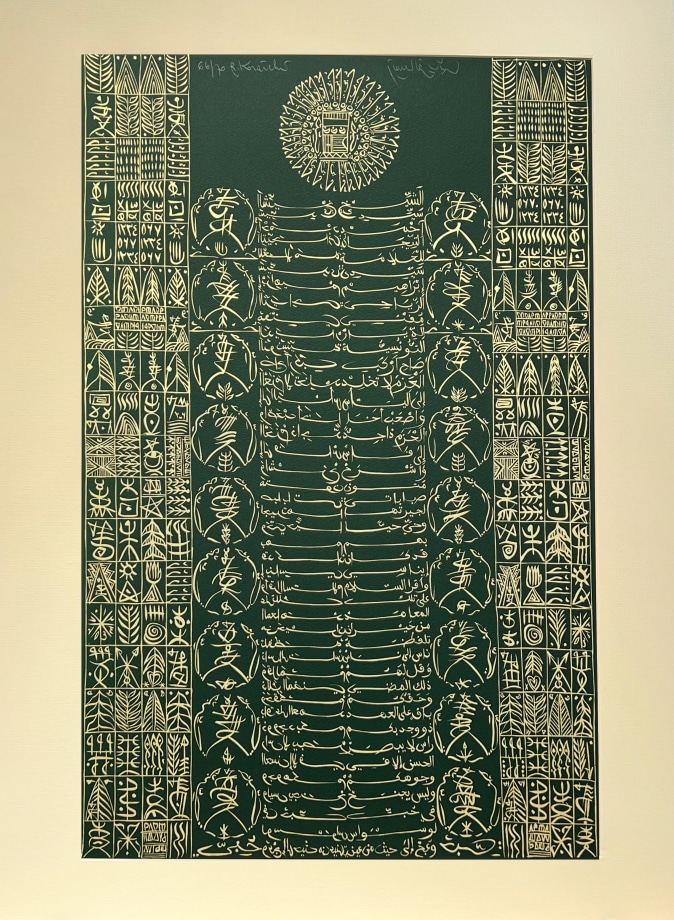
Rachid Koraïchi, Cheikh Sidi Ahmed Tidjani (5), 2009, Lithograph, 24 x 15 ¾ in (61 x 40 cm)
KORRA158
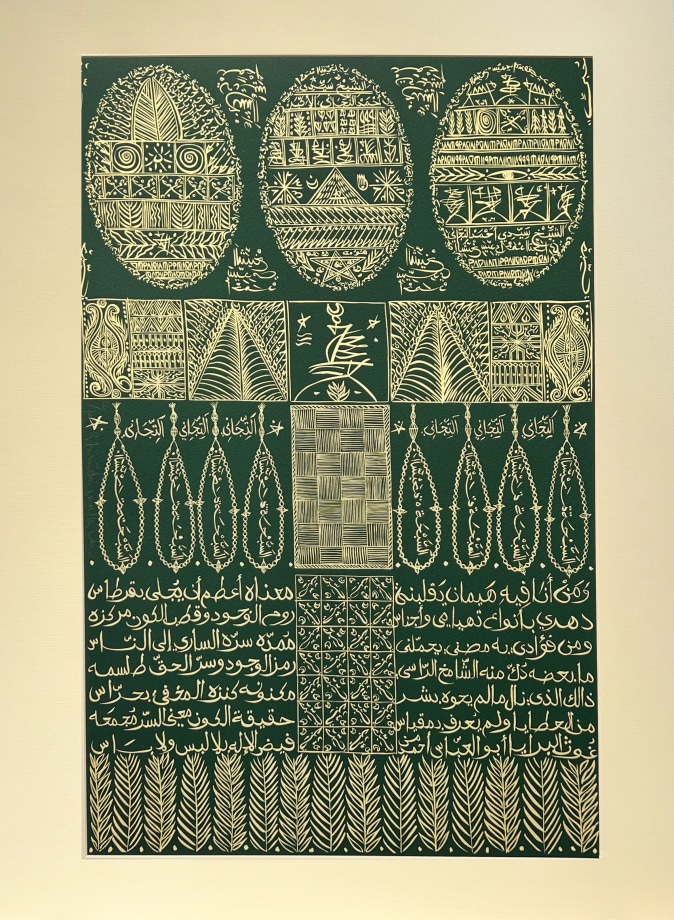
Rachid Koraïchi, Cheikh Sidi Ahmed Tidjani (6), 2009, Lithograph, 24 x 15 ¾ in (61 x 40 cm)
KORRA153
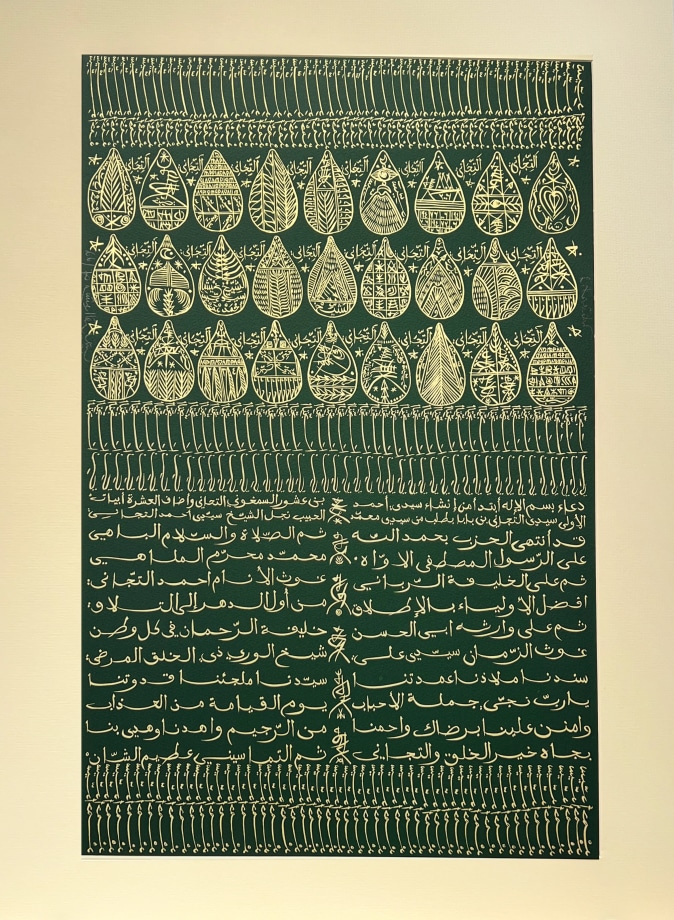
Rachid Koraïchi, Cheikh Sidi Ahmed Tidjani (7), 2009, Lithograph, 24 x 15 ¾ in (61 x 40 cm)
KORRA157
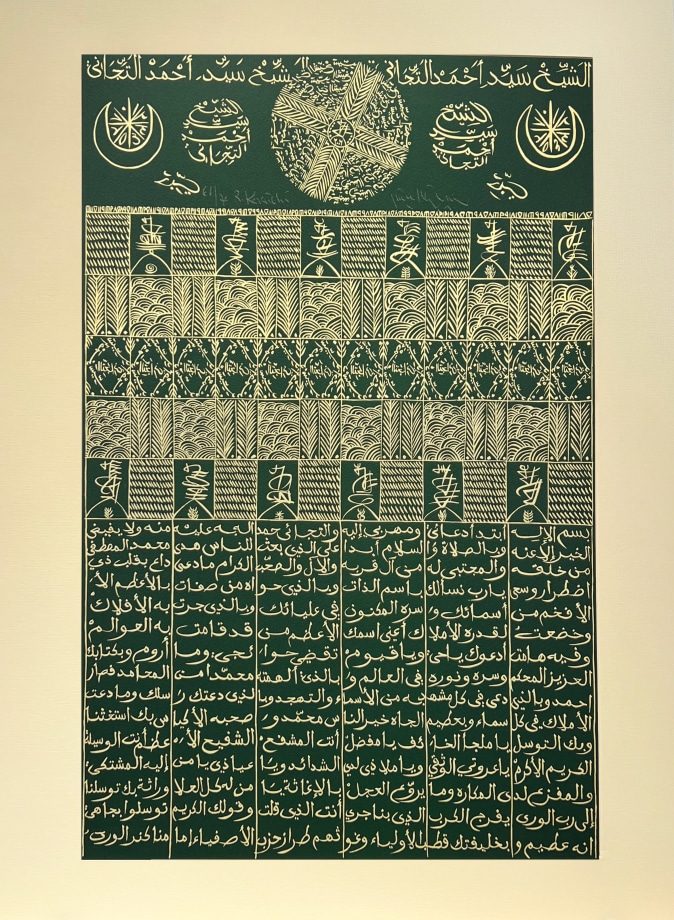
Rachid Koraïchi, Cheikh Sidi Ahmed Tidjani (8), 2009, Lithograph, 24 x 15 ¾ in (61 x 40 cm)
KORRA156

Rachid Koraïchi, Ibn Ata Allah Al Iskandari (1), 2009, Lithograph, 24 x 15 ¾ in (61 x 40 cm)
KORRA184
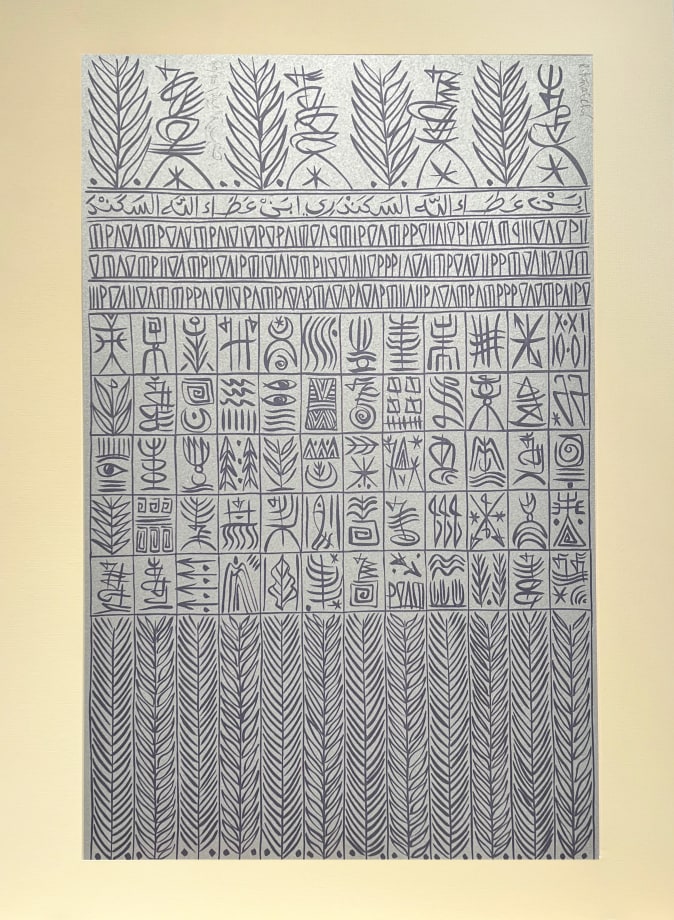
Rachid Koraïchi, Ibn Ata Allah Al Iskandari (2), 2009, Lithograph, 24 x 15 ¾ in (61 x 40 cm)
KORRA182
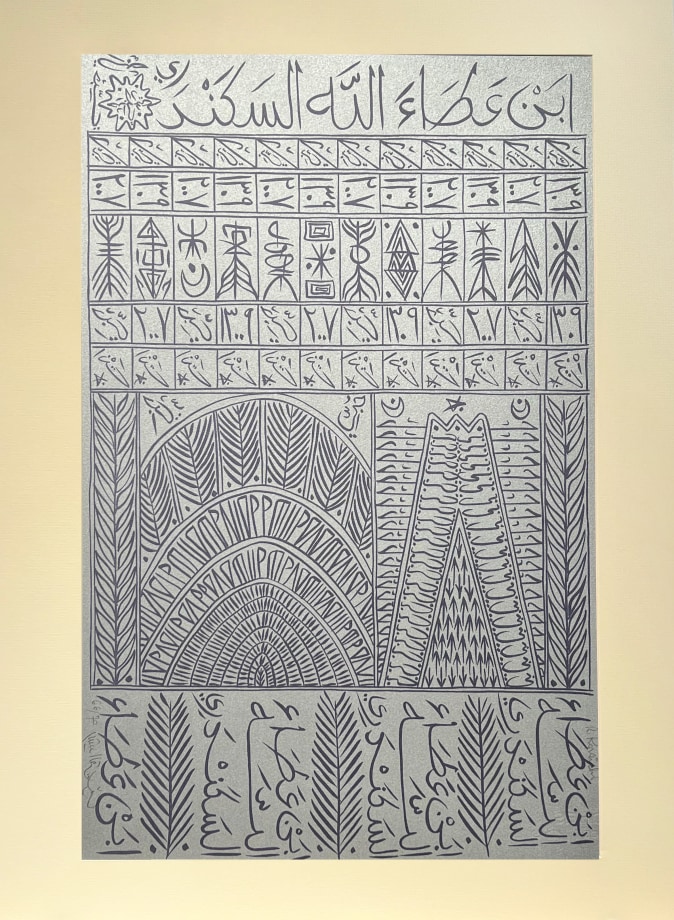
Rachid Koraïchi, Ibn Ata Allah Al Iskandari (3), 2009, Lithograph, 24 x 15 ¾ in (61 x 40 cm)
KORRA180
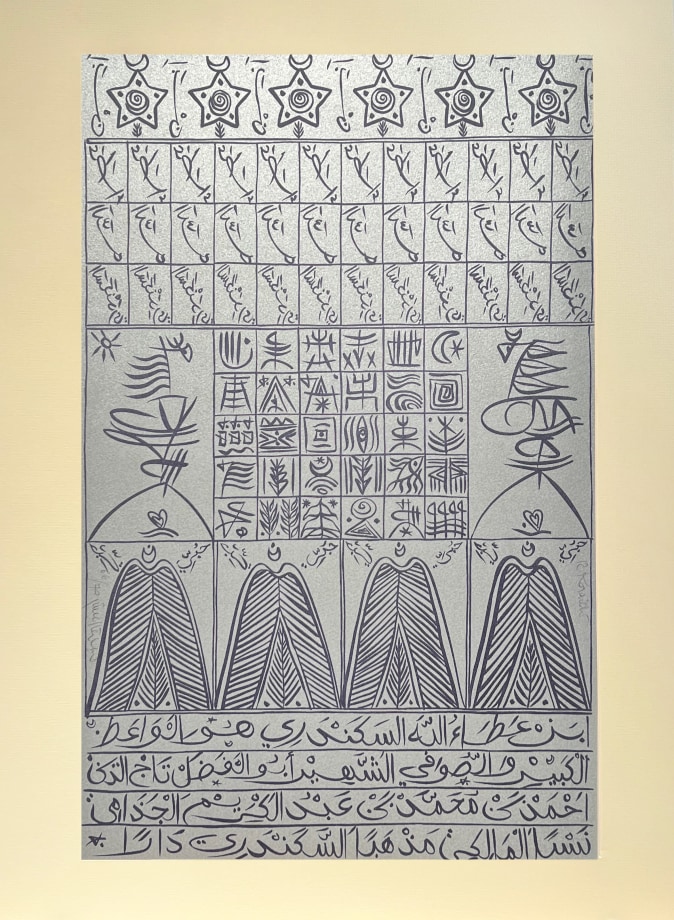
Rachid Koraïchi, Ibn Ata Allah Al Iskandari (4), 2009, Lithograph, 24 x 15 ¾ in (61 x 40 cm)
KORRA183
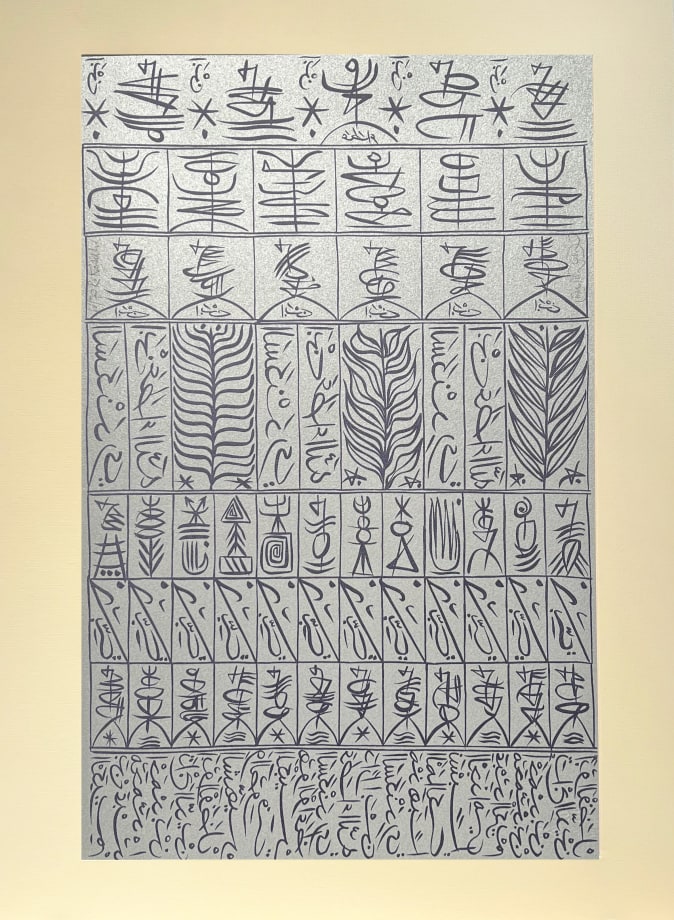
Rachid Koraïchi, Ibn Ata Allah Al Iskandari (5), 2009, Lithograph, 24 x 15 ¾ in (61 x 40 cm)
KORRA181
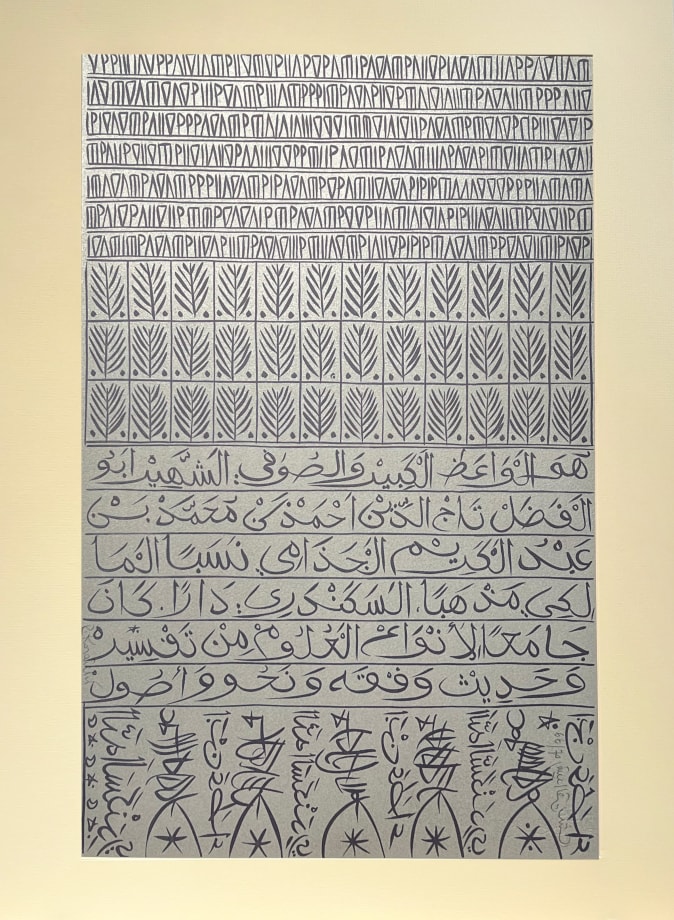
Rachid Koraïchi, Ibn Ata Allah Al Iskandari (6), 2009, Lithograph, 24 x 15 ¾ in (61 x 40 cm)
KORRA177
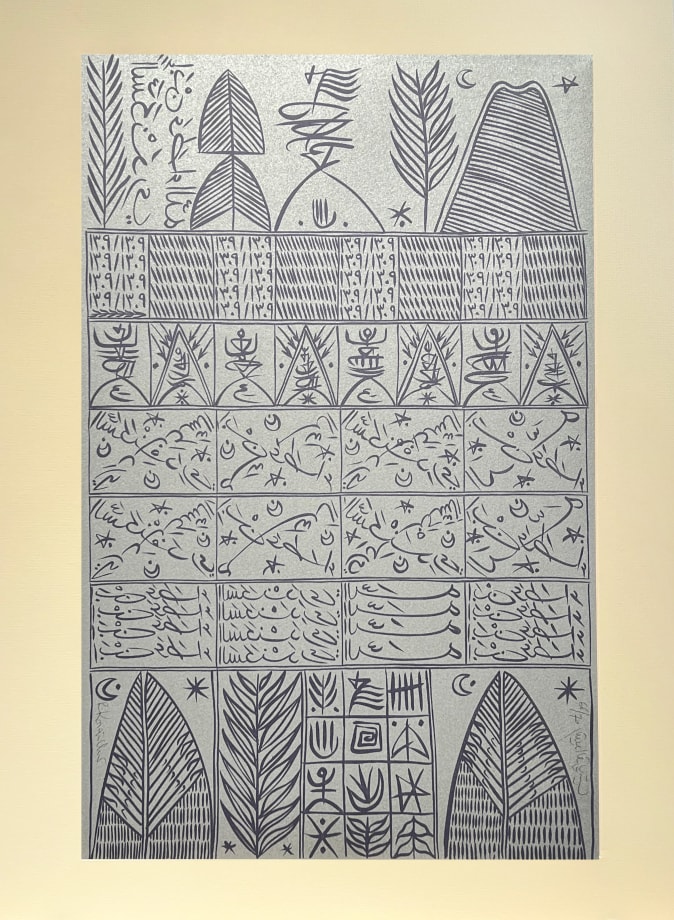
Rachid Koraïchi, Ibn Ata Allah Al Iskandari (7), 2009, Lithograph, 24 x 15 ¾ in (61 x 40 cm)
KORRA178
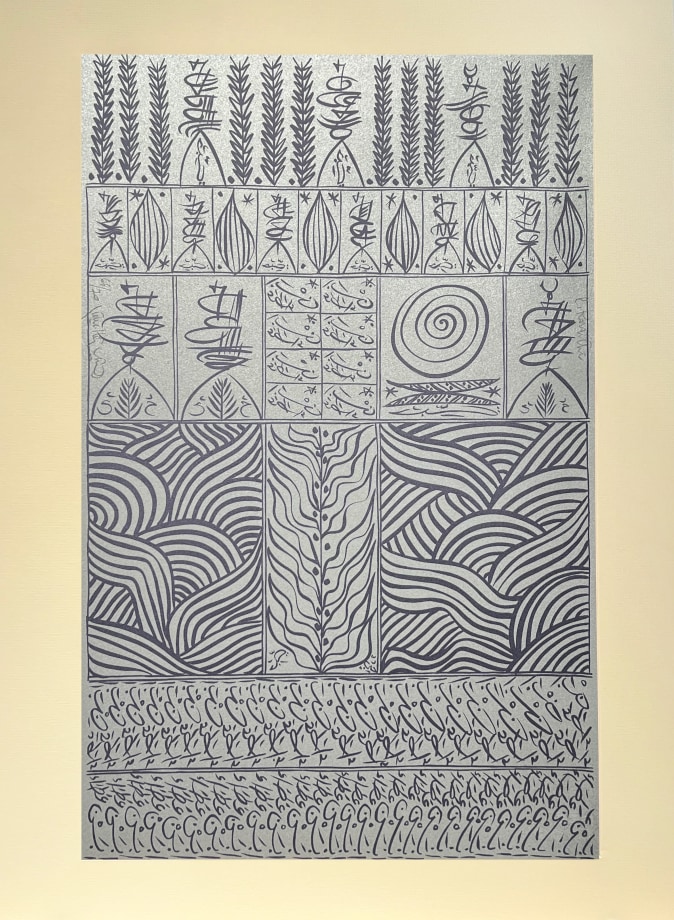
Rachid Koraïchi, Ibn Ata Allah Al Iskandari (8), 2009, Lithograph, 24 x 15 ¾ in (61 x 40 cm)
KORRA179
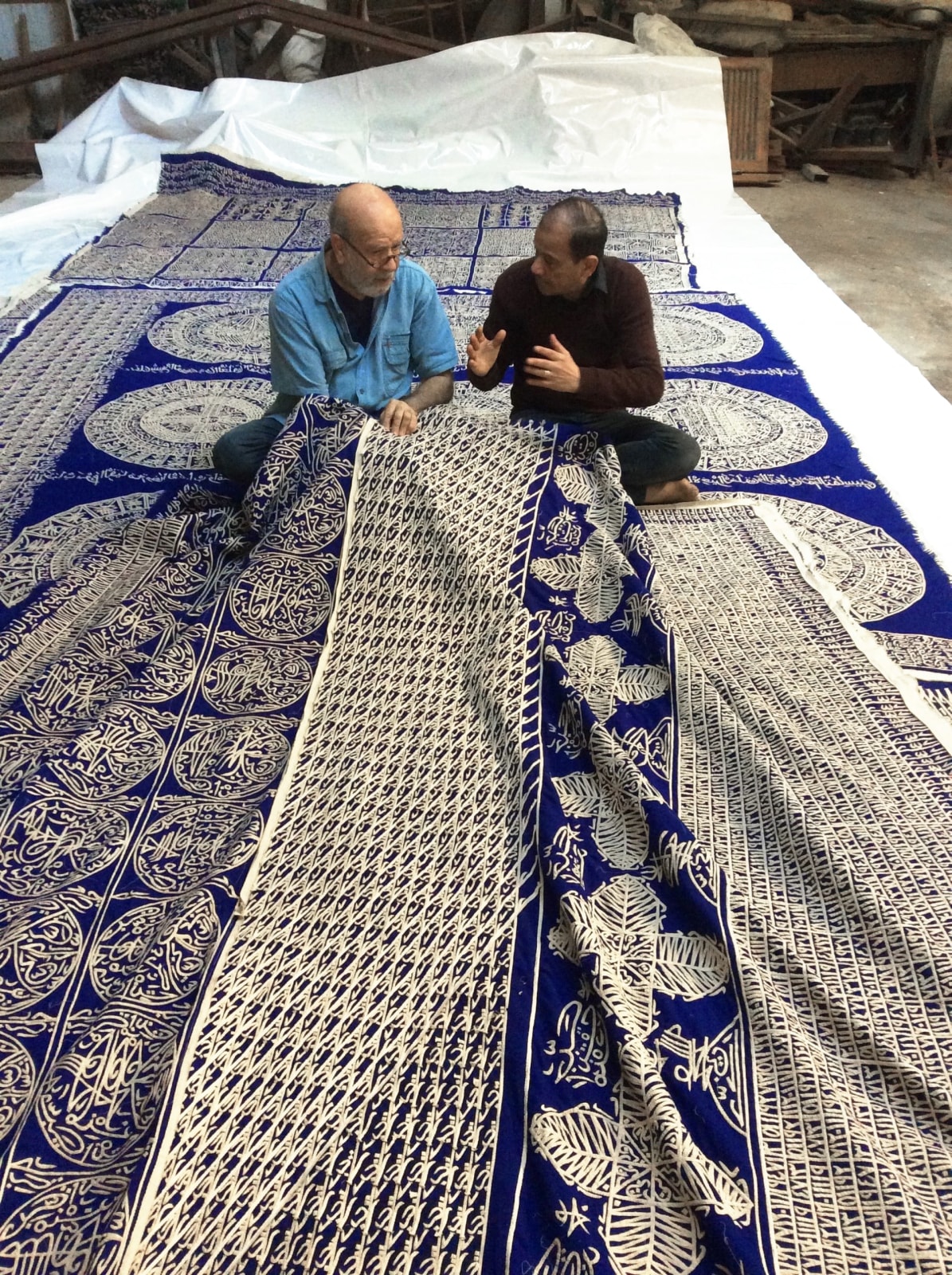
Aicon is pleased to present Les Nuits du Destin, the fourth solo exhibition of Algerian-born artist Rachid Koraïchi at the gallery. Borrowed from the Arabic term Laylat al-Qadr, “The Night of Destiny,” the exhibition’s title refers to the holiest night in the Islamic calendar, when the first verses of the Qur’an were revealed to the Prophet Muhammad. For Koraïchi—whose work is rooted in Sufi mysticism, sacred calligraphy, and the material traditions of the Islamic world—the phrase becomes a meditation on time, transcendence, and the unseen forces that shape our lives. The exhibition brings together two new bodies of work: hand-stitched appliqués and indigo-glazed ceramics, each bearing witness to the artist’s belief in the transformative power of text, craft, and ritual. The following essay arises from conversations between the artist and Sumesh Sharma, a writer and curator based in Mumbai.
Rachid Koraïchi traces his origins to the Quraysh tribe of Mecca, among whom the Prophet Mohammed was born. After the establishment of Islam, the tribe spread across a vast geography—from the Atlantic coast of Senegal and the Mediterranean city of Kairouan in Tunisia to the Caucasus Mountains and the eastern edge of the Bay of Bengal. They came as scholars, traders, medicants, and saints of various Sufi orders. Koraïchi, born in 1947, descends from a family of scholars and members of a Sufi order. He came of age just as Algeria achieved independence, at a moment marked by fervent resistance to colonial rule.
Koraïchi revisits the routes his ancestors took to reach Algeria as a chart for determining the materiality, techniques, and visual vocabulary of his diverse practice. Beginning in Cairo—the magnificent city of palaces and mosques established by the Fatimids—he retraced their journey. At the wooden-roofed market of Qasaba of Radwan Bey, under softly latticed mashrabiya balconies, lie the shops of the tentmakers. These artisans preserve a continuous tradition of craft, using an appliqué technique where delicate white cotton cloth is hand-woven over a tougher layer of dark blue cotton canvas. Reconnecting with them, Koraïchi found common ground through their shared affiliation with the Tijaniyya Sufi order.
Al Khayamiya is the name given to these appliqué textiles, derived from the Arabic word khayma, meaning “tent.” Through his research, Koraïchi found that the tradition of appliqué predates the advent of Islam and the Arab world. During Pharaonic times, as part of funerary rites, priests draped the Pharaoh in sacred Egyptian cotton shrouds adorned with religious symbolism and pictograms, hand-woven through appliqué. In homage, Koraïchi titles his banners Suaires Bleus des Pharaons (Blue Shrouds of the Pharaohs). The aesthetic of these banners draws from Sufi talismans and the Hurufiyya movement—a modern art movement pioneered by figures like Egyptian artist Hamed Abdalla, rooted in Sufi esotericism. One must strain to decipher the meaning embedded in these complex calligraphic and geometric patterns. At once, they are art objects, meditative visions, acts of remembrance, and revivals of sacred script.
A set of wide-mouthed open vases, titled Jarres de Clot et de Naâma (Jars of Clot and Naâma), are ceramic works glazed in a distinctive indigo blue common to both Andalusia and the Maghreb. The name references El Clot, an industrial neighborhood in Barcelona, and Naâma, a city in western Algeria where an ancient terracotta vase was recently unearthed in the arid desert. Using that form as a template, Koraïchi produced these ceramics in his studio in El Clot. The white ceramic jars are adorned with mystical blue verses, diagrams, and charts. His homage to the color blue evokes not only the Azur heritage of Andalusia but also its significance within Sufi cosmology. According to Koraïchi, blue symbolizes invisibility: we perceive the sky above as blue but cannot capture its color, for it is as intangible as thin air; we swim in the aquamarine waters of the Mediterranean but cannot carry it with us, as the water turns transparent when scooped from the sea. In this, Koraïchi offers a deep metaphor for the soul—intangible, ever-present, and journeying with us through life and into death.
The role of an artist in metropolitan Europe, particularly within a post-industrial context, differs markedly from that of an artisan in North Africa. Koraïchi embraces the multifaceted role of an artist, especially in light of Joseph Beuys's assertion that “Everyone is an Artist.” Yet, he rejects the nihilism toward materiality, pattern, and utility that is often expected of contemporary art. Rather than producing objects devoid of any spiritual currency, he adorns them with metaphor—layered deeply in both image and process. This is his aesthetic dissent: a refusal of the European gaze and its accompanying philosophical underpinnings that do not hold true for the rest of humanity. Koraïchi refuses to be labeled a calligrapher, ceramicist, or tentmaker. Instead, he embraces the full mantle of the artist.
Rachid Koraïchi was born in Aïn Beïda, Algeria in 1947 and now lives and works in Paris with major projects in Algeria, Egypt, Spain, Tunisia, the USA, and Dagestan. His practice extends across an impressive range of media, including ceramics, textiles, bronze sculptures, and canvases. He engages local artists and craftsmen trained in ancient traditions to craft pieces for site-specific installations. Koraïchi won the prestigious Jameel Prize in 2011. The artist presented installations at the Emirates Palace in Abu Dhabi in 2011 and Marrakech Biennale in 2016. He was included in both the 47th and 49th Venice Biennales. Koraïchi was shown in the inaugural exhibition at the Guggenheim Abu Dhabi in 2015 as well as The Future of Tradition, Haus der Kunst, Munich, 2010; Word into Art, The British Museum, 2006; and Without Boundary: Seventeen Ways of Looking, MoMA, 2006. Le Jardin d’Afrique, Koraïchi’s cemetery for migrants who drowned while crossing the Mediterranean, was short-listed for the Aga Khan Award for Architecture in 2022.
Exhibition photography by Sebastian Bach.